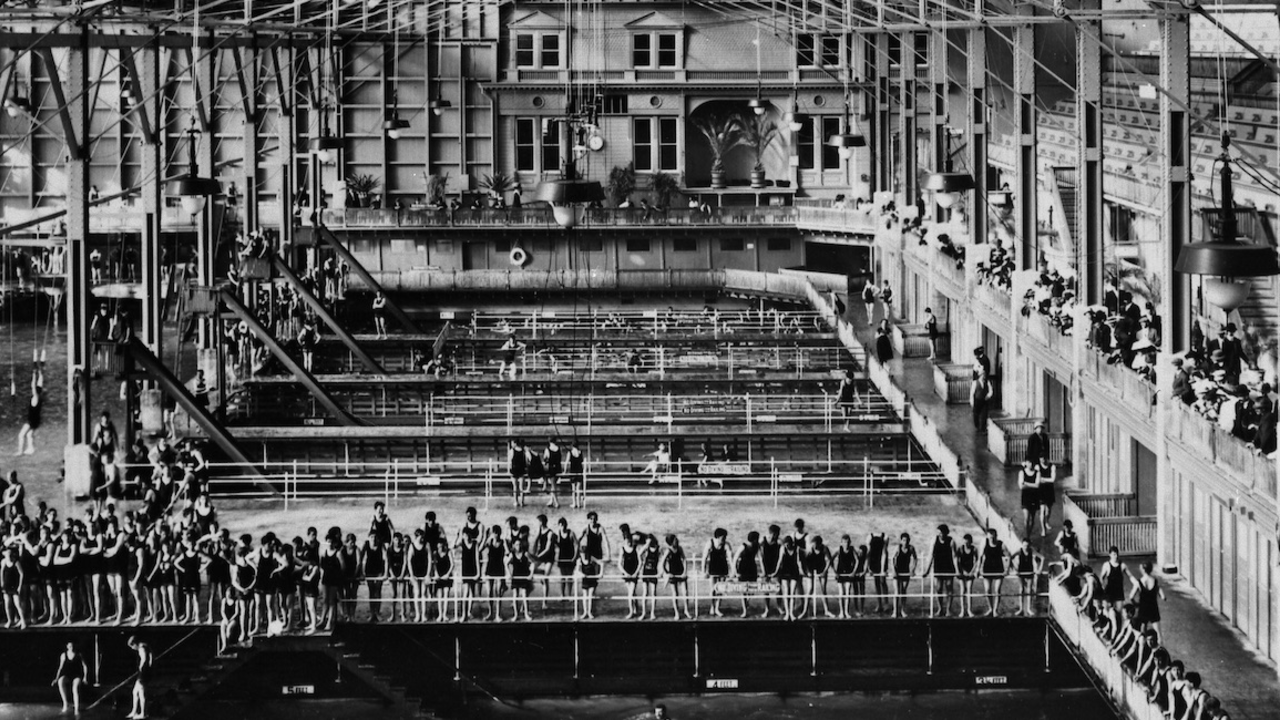Testing the Water: Sutro Baths Case Set Precedent for Civil Rights Laws

Gary Stark/The Cliff House Project
On the Fourth of July in 1897, John Harris, a 38-year-old African American waiter, was denied entry to the Sutro Baths swimming complex (the ruins of which can now be found at Lands End in the Golden Gate National Parks).
After paying the 25-cent fee, Harris—the sole black man among his white friends—was the only person denied admission at the popular Sutro Baths by the Cliff House.
Sutro Baths, regarded as the largest natatorium in the world, offered seawater-filled tanks, museum-type exhibits, and concerts and performances. It was considered the place to be in San Francisco.
Harris sued Adolph Sutro—namesake and benefactor of the Baths, mayor of San Francisco, and one of the wealthiest and most powerful men in the city—based on racial discrimination under the Dibble Civil Rights Act, California’s pioneering civil rights law.
And Harris won.
“The legal results of the trial, which originated in what is now national parkland, were a precursor to the national Civil Rights Act of 1964,” says Rik Penn, an interpretive ranger for Golden Gate National Recreation Area.
The Dibble Act of 1897 was the achievement of abolitionist Henry Clay Dibble, who arrived in San Francisco from New Orleans, after losing a leg while fighting in the Civil War.
Elected to the California Assembly in 1888, Dibble sponsored the civil-rights bill that was signed into law on March 13, 1897. It mandated that all citizens “of every color or race whatsoever” would be entitled to full and equal facilities of all shared places of public accommodation and amusement.
The African American Assembly Club had set aside money to bring cases of discrimination to the courts, and the Harris case was the first successful one in San Francisco after the passing of the Dibble Act.
“Even though the jury ruled in favor of Harris, they softened the damages to the defendant to only $50 per violation—which was the minimum damage required to be paid under the Dibble Act,” Penn explains.
Because Harris was denied entry to Sutro Baths twice, he was paid $100 total—a sum that did not even cover his legal fees, and was way below the $10,000 charged in the suit.
It did, however, make an important statement: that the pools were for everybody, and not just for white people. It also inspired several other suits against discrimination around the state of California.
Unfortunately, after an initial spate of cases brought to the courts around the state, the Dibble Act faded in memory for about 50 years, as it became the target of vicious newspaper editorials.
“Even the San Francisco court records of this [Harris] case were lost in the fire and earthquake of 1906,” Penn adds. The Dibble Act records remained in Sacramento until it was rediscovered by the staff of California Assembly Speaker Jesse Unruh in the 1950s.
As the Civil Rights movement gained momentum with Rosa Parks and the Brown v. Board of Education ruling, Unruh championed the Unruh Civil Rights Act, which passed in 1959.
The Unruh Act was recognized as the state’s first civil rights act, and became the model for other states’ laws—and for the historic Civil Rights Act of 1964.
In reality, however, it was simply an amendment of Dibble’s 1897 Act—an act with deep roots right here in San Francisco, where a former Union soldier worked passionately on antidiscrimination reforms, and a young man filed suit because he was barred from going for a swim with his friends.
As we celebrate Black History Month in February, we can find resonances here in our national parks, those places historian Wallace Stegner called “the best idea we ever had.” And we realize that those “best ideas” stand also to remind us of our nation’s worst impulses—and the steps our society has taken to correct those injustices, one case at a time.
Source: Elaine Elinson, co-author of “Wherever There’s a Fight: How Runaway Slaves, Suffragists, Immigrants, Strikers, and Poets Shaped Civil Liberties in California.” (Heyday, 2009).
Historic photos courtesy of Golden Gate National Recreation Area Park Archives